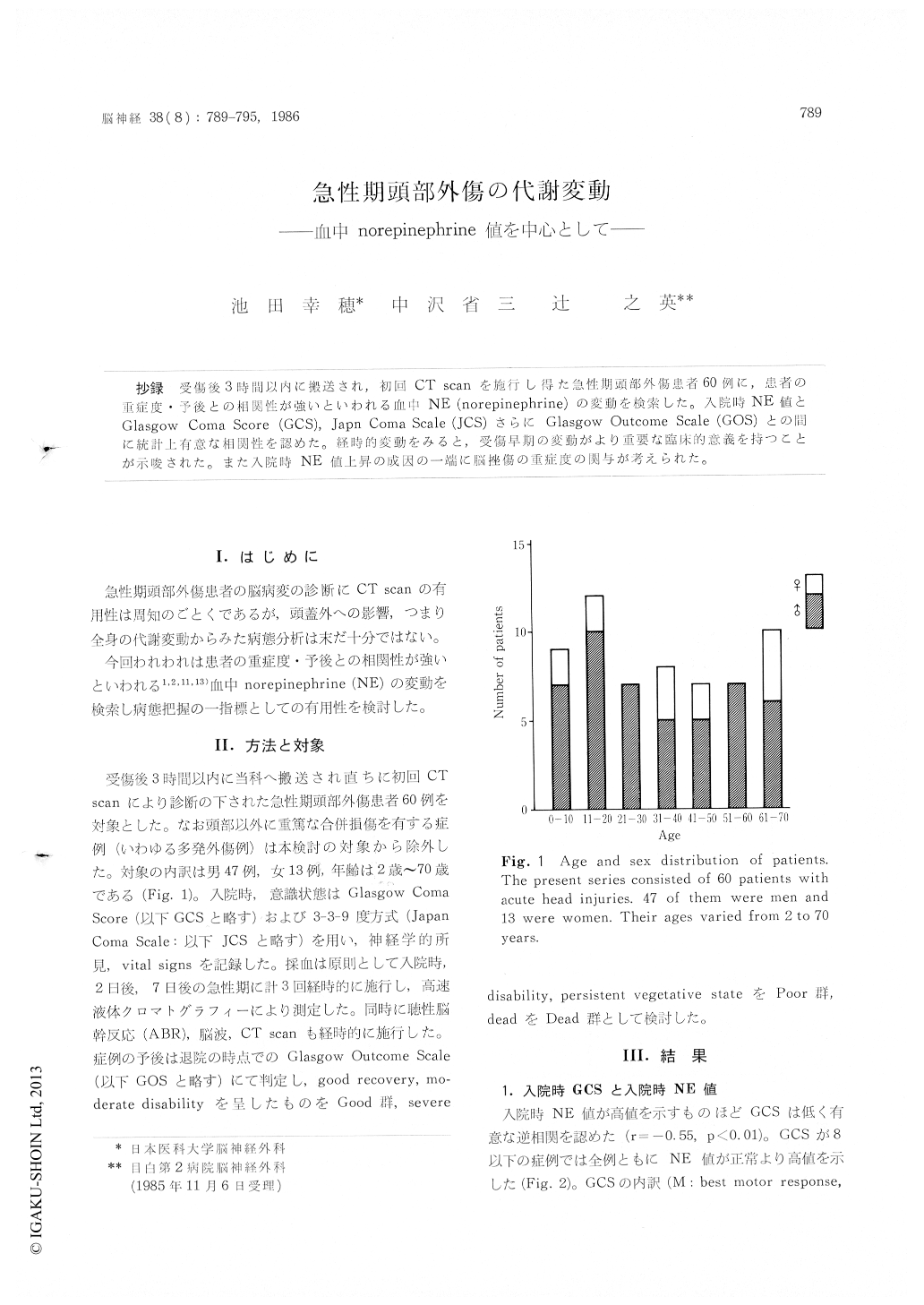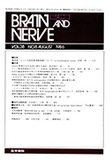Japanese
English
- 有料閲覧
- Abstract 文献概要
- 1ページ目 Look Inside
抄録 受傷後3時間以内に搬送され,初回CT scanを施行し得た急性期頭部外傷患者60例に,患者の重症度・予後との相関性が強いといわれる血中NE (noreplnephrine)の変動を検索した。入院時NE値とGlasgow Coma Score (GCS), Japn Coma Scale (JCS)さらにGlasgow Outcome Scale (GOS)との間に統計上有意な相関性を認めた。経時的変動をみると,受傷早期の変動がより重要な臨床的意義を持つことが示唆された。また人院時NE値上昇の成因の一端に脳挫傷の重症度の関与が考えられた。
The plasma catecholamine levels have been ac-cepted as an index of sympathetic nervous activity in cardiovascular and neurologic disorders. It is known that the plasma norepinephrine (NE) level is thought to reflect the degree of sympathetic nervous activity. NE is the neurotransmitter re-leased from sympathetic nerve endings. In recent years several studies have suggested the role of biogenic amines in brain and spinal cord trauma. Head injury is almost always associated with sys-temic changes. Patients with head injury often exhibit cardiovascular abnormalities, hypertension, tachycardia, electrocardiographic abnormalities and acute pulmonary edema which are regarded as signs of increased sympathetic nervous system activity.
The present study was undertaken to examine whether the measurement of plasma NE levels is valuable to assess and evaluate clinical status of patients with acute head injuries. Sixty patients with acute head injuries admitted to our De-partment were studied. Fourty seven patients were male and thirteen patients were female, ages ranged from 2 to 70 years. All patients were di-agnosed by CT scan within three hours after head injury. Serial blood samples were also obtained during the first 7 days after head injury. The plasma NE was measured by high performance liquid chromatography. The Glasgow Coma Score (GCS) and the Japan Coma Scale (JCS) were re-corded at admission for all patients. Clinical out-come was assessed at the time of discharge accord-ing to the Glasgow Outcome Scale. The "good" group consisted of patients with good recovery or moderate disability. The "poor" group consisted of patients with severe disability and persistent vegetative state and the "dead" group.
There was little correlation between systolic blood pressure and plasma NE levels. Plasma NE levels at the time of admission was negatively correlated to GCS (r=-0.55, p<0.01). The mean plasma NE levels in "dead" group was signifi-cantly higher than those in "good" group. Serial plasma NE levels were comparable in "good" and "bad" groups. During the first few days after head injury, plasma NE levels among patients in "poor" and "dead" groups were siginficantly high-er than those in the "good" group, while on the 7th day there was no difference in plasma NE levels between two groups. No particular correla-tion between initial CT findings and NE levels was found. But one of the major factors to increase NE levels was associated with the severity of ce-rebral contusions.
In summary, measurement of plasma NE may offer useful information for making prognosis and selecting a suitable treatment.

Copyright © 1986, Igaku-Shoin Ltd. All rights reserved.


